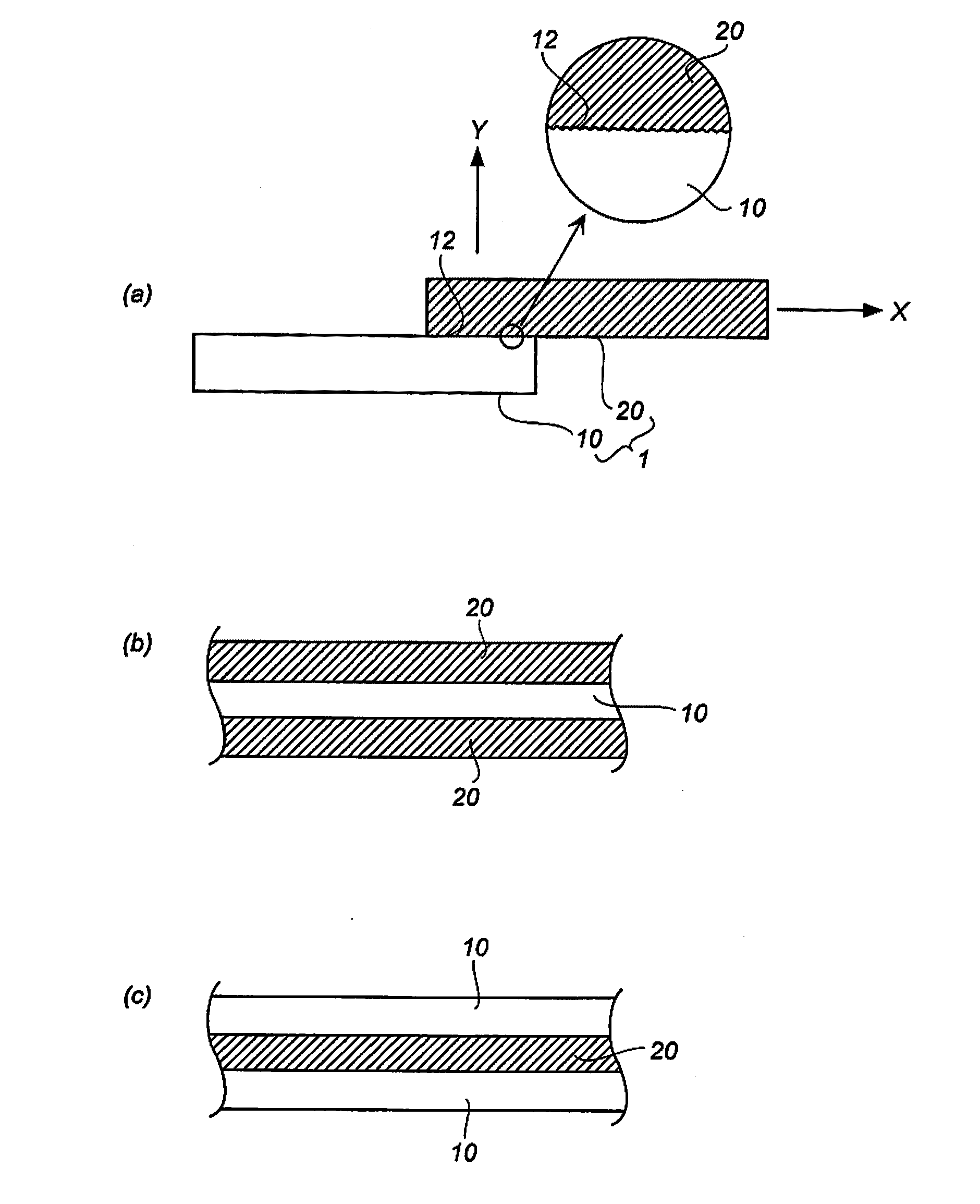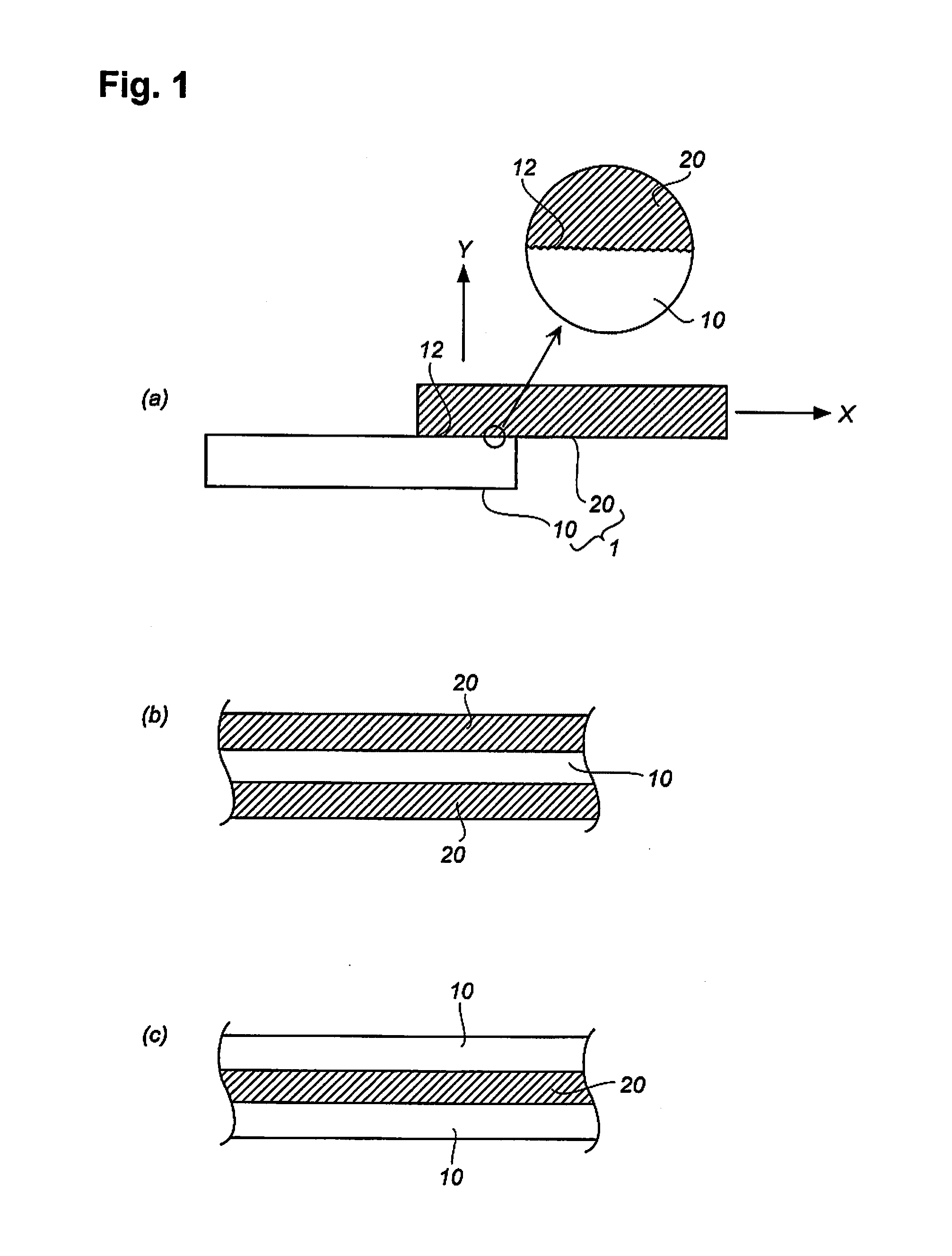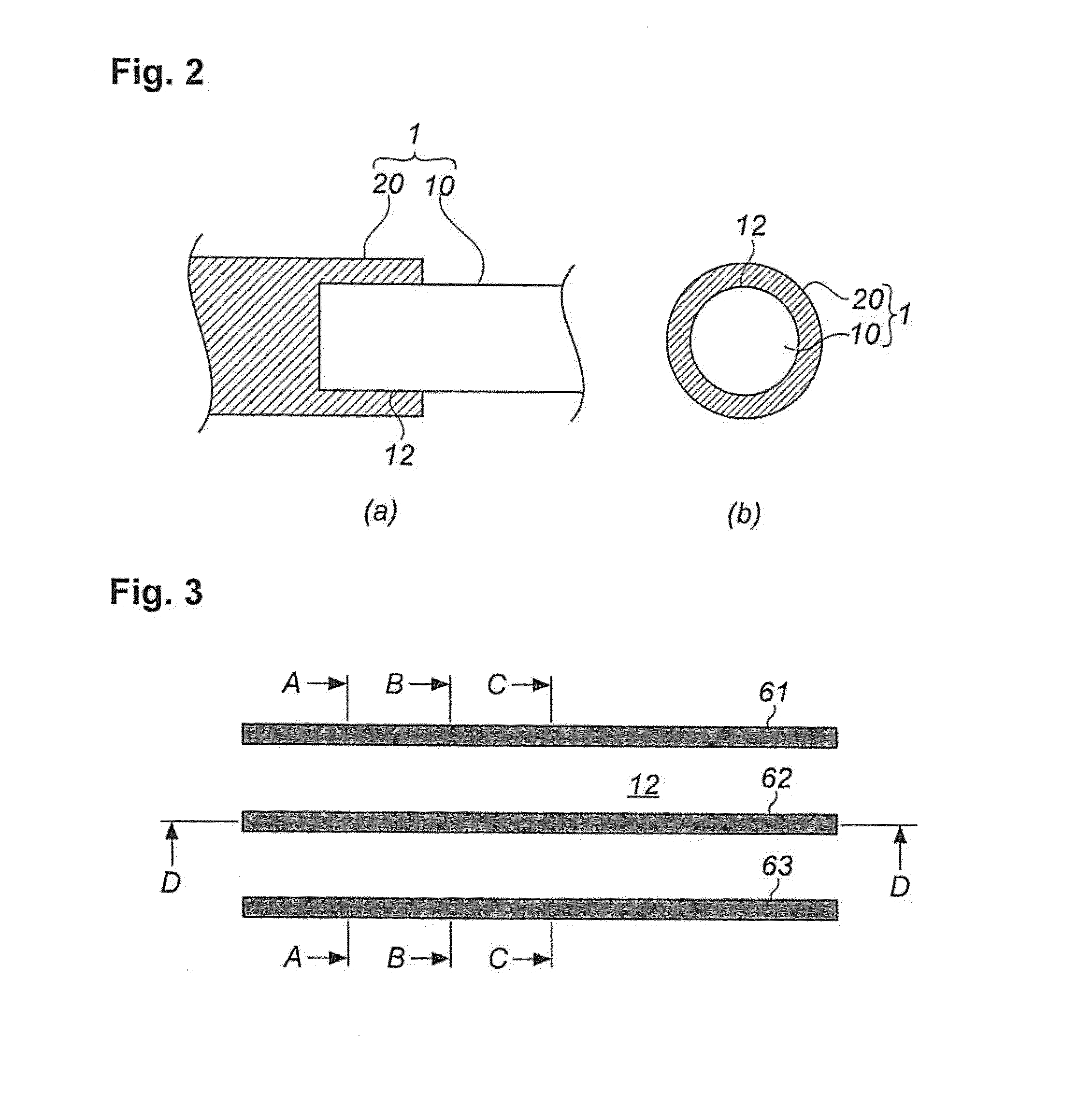Composite molded article
a composite material and article technology, applied in the field of composite materials, can solve the problems of high bonding strength, difficulty in replacing all metal components with resins, and high cost, and achieve excellent in both tensile strength and tensile strength, and reduce the effect of tensile strength
- Summary
- Abstract
- Description
- Claims
- Application Information
AI Technical Summary
Benefits of technology
Problems solved by technology
Method used
Image
Examples
example 16
[0295]In Example 16, the entire surface (an area of 120 mm2) of a bonding surface 112 of a metal molded article 100 shown in FIG. 28 (thickness: 3 mm, (SUS304)), was continuously irradiated with laser light under the condition shown in Table 4.
[0296]Subsequently, the metal molded article 100 thus treated were used, and soldering was performed according to the following manner, thereby providing a composite molded article of the metal molded article 100 (SUS304) and solder 110 shown in FIG. 29.
[0297]FIG. 30 is an SEM micrograph (magnification: 1,500) of the cross section in the thickness direction of the composite molded article of SUS304 and solder. The portion that appears relatively white is solder, and the portion that appears relatively black is SUS304. It was confirmed that solder permeated into the depressed portions of the roughened surface of SUS304.
[0298]An untreated metal molded article 100 (SUS304) was tried to be subjected to soldering in the same manner as in Example 16...
examples 17 and 18
[0300]In Example 17, the entire surface (an area of 120 mm2) of a bonding surface 212 of a metal molded article 200 shown in FIG. 31 (aluminum (A5052), thickness: 3 mm) was continuously irradiated with laser light under the conditions shown in Table 5.
[0301]Subsequently, the metal molded article thus treated was used, and compression molding was performed according to the following manners, thereby providing a composite molded article of the metal molded article 200 (A5052) and a phenol resin molded article 220 shown in FIG. 32.
[0302]In Example 18, the entire surface (an area of 120 mm2) of a bonding surface 212 of a metal molded article 200 shown in FIG. 31 ((SUS304), thickness: 3 mm) was continuously irradiated with laser light under the conditions shown in Table 5.
[0303]Subsequently, the metal molded article thus treated was used, and compression molding was performed according to the following manners, thereby providing a composite molded article of the metal molded article 200 ...
PUM
| Property | Measurement | Unit |
|---|---|---|
| depth | aaaaa | aaaaa |
| speed | aaaaa | aaaaa |
| speed | aaaaa | aaaaa |
Abstract
Description
Claims
Application Information
 Login to View More
Login to View More - R&D
- Intellectual Property
- Life Sciences
- Materials
- Tech Scout
- Unparalleled Data Quality
- Higher Quality Content
- 60% Fewer Hallucinations
Browse by: Latest US Patents, China's latest patents, Technical Efficacy Thesaurus, Application Domain, Technology Topic, Popular Technical Reports.
© 2025 PatSnap. All rights reserved.Legal|Privacy policy|Modern Slavery Act Transparency Statement|Sitemap|About US| Contact US: help@patsnap.com



